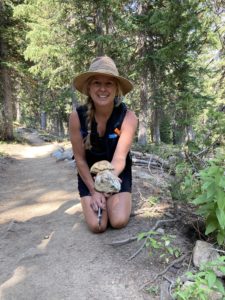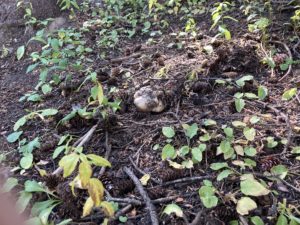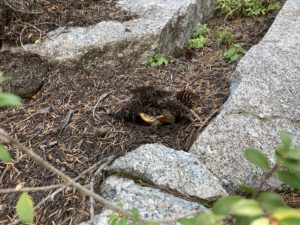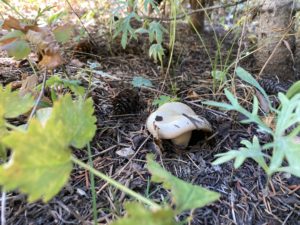Canyon Blog was afforded the wonderfully informative opportunity to accompany Sara Gibbs, Alta Community Enrichment director extraordinaire, on a journey into the world of Wasatch mushrooming. The first thing your correspondent learned is that it isn’t actually mushrooming, rather something she referred to as “munting,” which was apparently German in origin but escaped this writer’s ability to track down, so we’ll just have to take that on faith.
Before “digging in” to mycology a few words on Sara and ACE. ACE is Alta’s version of an arts institute and focuses on bringing culture, art and education to the town and both resorts. It’s a wonderful nonprofit and worthy of your support. Like so many before, Sara herself came to Utah by way of powder pursuit and then stayed. She joined ACE’s board to contribute but eventually ascended to the director’s position through sheer positive energy. You can learn more here https://altacommunity.org/.
We began our excursion at the White Pine trailhead using a Pfeifferhorn summit goal as cover for our true purpose, porcini mushrooms. These and hawks wings mushrooms (also known as hedgehogs by aficionados) are her two favorites. “That’s because I can identify them with confidence.” Sound advice. One of the things about “munting” that should always be kept in mind is that one must know what one is doing. Many varieties are similar and can fool the casual munter. Consuming wild mushrooms is not for the uninitiated.
For education and fun Sara recommends contacting the Utah Mushroom Society and its founder Ardean Watts https://www.utahmushrooms.org/. A loosely organized club of mycophiles, they offer foraging excursions throughout northern Utah and a wonderful annual fall foray in August to share knowledge and culinary tips. They’re also very welcoming of newcomers.
But back to our own fall foray. Two miles into our 9.6-mile trek Sara froze your correspondent in midstride with a shriek, “Look at this one!” Indeed, after he got his heartrate under control, a four-inch crown could be seen protruding not six inches from the trail. Digging out a pocketknife she made short work of harvesting the lone specimen. But as you can see they grow much larger and can weigh 2.5 pounds.



From there it seemed we couldn’t go more than a few hundred yards through the more forested sections of the hike without some kind of fungi making itself known. Most weren’t edible but all were fascinating once you stopped to consider their presence and unique biology.


The best time to hunt is spring through early fall, especially after rains which accelerates growth. Her favorite recipe is to slice (always vertically) a porcini and sauté lightly with a bit of butter and dash of salt. “But not too much,” she cautions, “because then it’s the butter you’re tasting, not the mushroom. And that’s the whole point.”
So, on your next visit to Little Cottonwood be sure to slow your hike and look around, especially in areas prone to more moisture, though it doesn’t take damp ground or even much really for them to grow. You’ll be amazed at what you find.

As we descended from our successful summit (all 11,331 feet) your correspondent couldn’t help but inquire as to why one “munts” at all? “Because,” she declared as though it should be obvious, “it turns every hike into a treasure hunt!”
